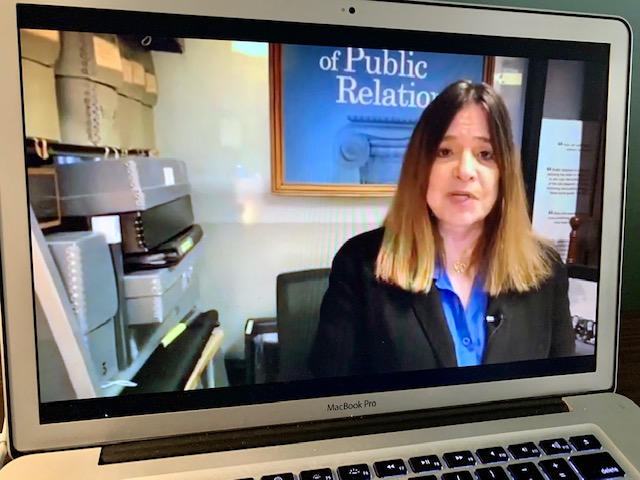Museum of Public Relations virtual tour shows industry’s history of influence

Shelly Spector, a founder of the Museum of Public Relations in New York, leads members of the National Press Club on a virtual tour of papers and artifacts showing the history of the PR industry.
During the first-ever virtual tour of the Museum of Public Relations on Wednesday, Club members and their guests saw papers and artifacts that chronicled the history of the PR industry and its influence on business and society.
Much of the museum’s collection is a tribute to Edward Bernays, one of the founders of PR. Shelly Spector, who led the online tour, opened the New York museum with her husband Barry in 1997.
The Spectors met Bernays at a party in the 1980s. After a relationship that lasted over the course of ten years and included frequent visits by the Spectors with Bernays at his home in Cambridge, Massachusetts, Bernays asked the couple to start the museum shortly before he died at the age of 103.
“Barry and I didn’t plan to start a museum. It just kind of happened,” Spector said. “We were thrown into it by Bernays because we couldn’t say no to him.”
The Club’s Communicators Team hosted the tour, which highlighted the work of other trailblazing PR practitioners. The exhibits included the typed manuscript of a publicity guidebook by Ivy Lee in 1928, and a letter by Harold Burson about his thoughts to establish the first business-to-business PR firm by partnering with an advertising agency. The company was formed in 1953 and today Burson Cohn and Wolfe is one of the world’s largest PR firms.
Spector said PR grew to prominence out of necessity during The Great Depression in the 1930s, when companies focused on their reputations instead of sales.
“Corporations took their money out of advertising because they knew that consumers weren’t going to buy their products,” she said. “So, they invested in public relations to gain trust between the public and the company.”
Spector further explained the history of the PR industry by focusing on its diversity and the important contributions by Blacks, women, Hispanics, Asians and other minorities. Among them was Ofield Dukes, who was a communications counselor to Rev. Martin Luther King Jr. during the Civil Rights Movement of the 1960s. Dukes later created the first Black-owned PR firm and represented Motown Records.
She also showed a press release with a dateline from the National Press Club in 1966 that announced the establishment of the National Organization for Women, which used PR methods to advocate for issues such as equal rights.
The museum is currently closed to the public because of the restrictions on indoor meetings to battle the pandemic. However, its website has many informative and educational programs about the PR industry.
“At the very beginning, 25 years ago, all we had was Bernays’ [papers],” Spector said. “As soon as the Internet came about, we created a museum online.”
The web-based museum enabled the addition of stories about Lee, Dukes and other PR pioneers, including Paul Garrett of General Motors and Moss Kendrix, an independent advisor to the Coca-Cola Company, which are still online today.
Adding an online component to the museum was a prophetic move, because Spector said, “In the days of Covid nobody, probably, is going to come and see your museum live.”
The museum’s digital resources include a recording of the virtual tour for the National Press Club’s members, which is available here.
